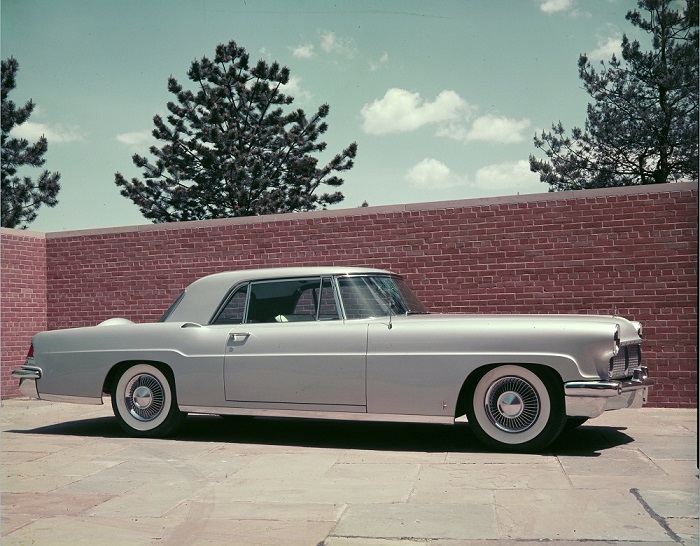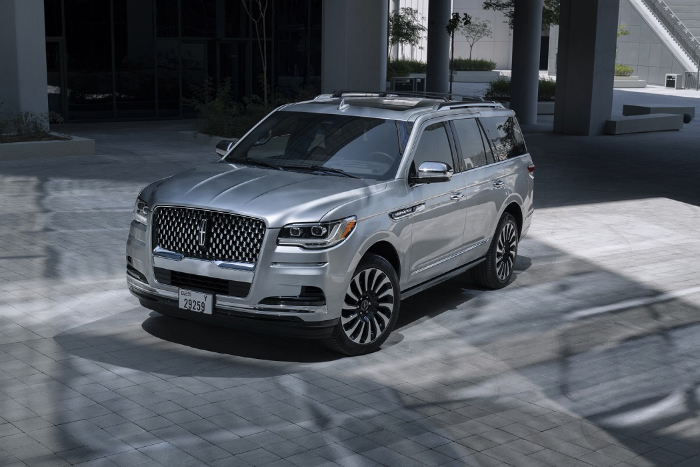On 4 February 1922, Henry Ford acquired The Lincoln Motor Company from distinguished inventor and automotive engineer, Henry Leland. The transaction set in motion the creation of an iconic American luxury brand that has pioneered some of the most innovative breakthroughs in automotive technology and design over the past century.

“As we reflect upon Lincoln’s storied past and find inspiration for the future, as a luxury brand, we strive to maintain a balance between the brand’s core values and redefining our vehicle and experiences for the next generation of luxury clients,” says Sami Malkawi, Managing Director, Lincoln Middle East.
Lincoln is committed to delivering a unique line-up of electrified vehicles and an effortless suite of services that create superior and unique experiences for its clients. Meanwhile, the brand continues to develop timeless nameplates such as the new Lincoln Navigator. With its spacious interior, confident exterior, advanced technologies, and unmatched comfort for both driver and passengers, the Navigator, already one of the Middle East’s most popular large-size luxury SUVs, brings a refreshed look to its powerful feel.
A century of innovation
Much of the success the company experienced early on is credited to the influence of Edsel Ford, Henry’s son, who served as president of Lincoln from shortly after acquisition to his death in 1943. His ambition is summed up best in his own famous words – “Father made the most popular cars in the world; I want to make the best.”
Edsel prioritized design and styling, while also making customization affordable, allowing him to offer precision and performance in a beautifully executed package, at a price within reach. The belief that a car could be more than just transportation was foundational to the rise of Lincoln.
In 1936, the company introduced the Lincoln Zephyr, the brand’s first mid-priced vehicle that featured a streamlined design and an “alligator”-type hood. In 1939 the Lincoln Continental debuted as a personal-use vehicle, becoming an instant design classic and quickly establishing the personal luxury car segment in America.
In 1952 Edsel’s son, William Clay Ford, was appointed manager of special product operations, in charge of engineers and designers planning the Continental’s successor, the Continental Mark II, considered by many one of the greatest cars ever built.
Through the years, Lincoln has pioneered multiple new features and innovations, and continues to introduce advancements today. A few more notable moments in its history include:
- 1955: Lincoln introduces the Mark II to showrooms
- 1961: Lincoln debuts coach doors on its Continental
- 1977: Integrated visor-mounted garage door opener debuts on Lincoln Versailles
- 1980: Speedometer, fuel gauge, message centers go electric, keyless entry is introduced
- 1987: Front-wheel drive debuts
- 1994: Memory recall for seat and mirror positioning introduced via a remote transmitter
- 2010: Lincoln launches its first hybrid electric vehicle – the MKZ Hybrid
- 2017: Lincoln reveals the Navigator concept, transforming the future of the flagship SUV with an all-new design and innovative features including 30-Way Perfect Position Seats
- 2018: Lincoln celebrates the 80th anniversary of the Continental and debuts the special edition Continental Coach Door
- 2018-19: Symphonic chimes recorded by Detroit Symphony Orchestra; Lincoln launches all-new Lincoln Aviator and Corsair SUVs
- 2021: Lincoln introduces the first locally produced sedan for the China market at Auto Guangzhou, the all-new Lincoln Zephyr, advancing the brand’s design language
Navigator: Leading Lincoln’s innovation
For a century, Lincoln has focused on forward-looking innovations, while maintaining its core values that keep the brand’s products fresh and desirable.
The introduction of the fourth-generation Navigator in 2018 was instrumental to an upturn in the direction of the brand. A combination of modern luxury and innovative technology, including the debut of 30-Way Perfect Position Seats in the all-new flagship SUV, elevated first-class travel for families, kicking off a resurgence that Lincoln continues to advance today.
The momentum continues with the introduction of new products and services. Last year saw the launch of a new Navigator, elevating the brand’s sanctuary again with signature new features, including ActiveGlide hands-free driver-assist technology.
Lincoln has always prided itself on delivering a luxurious experience for every rider, and the new Navigator continues this tradition with two new interior themes, Central Park and Invitation, in addition to technologies that prioritize a seamless, connected, and personalized experience for driver and passengers. These include Lincoln’s SYNC 4 infotainment system, which can recognize individual voices for hands-free control of an enhanced navigation operating system via a new, larger 13.2-inch center screen. Meanwhile, drivers have the freedom to configure a reimagined 12-inch heads-up display with the information they want, without needing to take their eyes off the road.
Marking a century of design and innovation
The core tenets that made Lincoln a flourishing American luxury brand are evident in today’s vehicles, services and client experiences, driving the spirit of Lincoln for more than 10 decades now and counting. As the brand looks ahead, Lincoln is laser-focused on advancing its DNA into an electrified and connected future. By 2030, it will have a full portfolio of connected and electrified vehicles globally.
“The timing of our 101st anniversary couldn’t be more ideal,” said Malkawi. “As Lincoln shifts to an electrified future, we continue to offer the luxurious feeling of sanctuary our brand is known for.”


COMMENTS